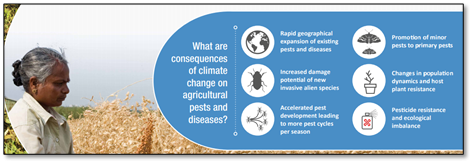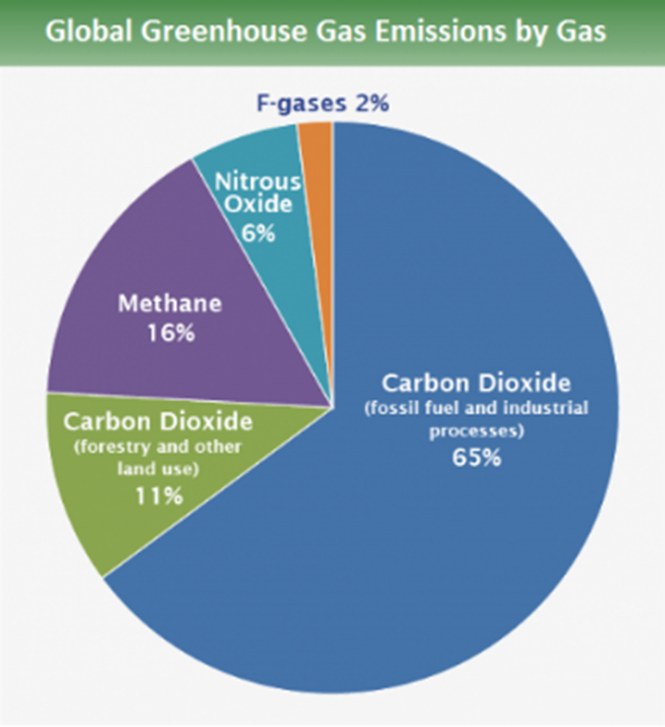Thursday, 10th June 2021
India’s Cabotage Law
In News
In an Atmanirbhar Bharat (self-reliant India) push, the Shipping Ministry could reverse the relaxation in cabotage restrictions granted in 2018.
What is Cabotage and Cabotage Law?
- ‘Cabotage’refers to the transport of goods or passengers between two ports/places within the same country by a foreign shipping/transport operator.
- Cabotage laws are formulated by countries to protect their own national ships and promote local development.
India’s cabotage law
- The Ministry of Shipping instituted the cabotage law to protect the domestic shipping industry in coastal transport.
- India’s cabotage policy is covered under the Merchant Shipping Act, 1958. According to India’s cabotage law -
- Only Indian registered ships are allowed to ply on local routes/along Indian coasts for carrying cargo.
- Foreign ships can operate along the coast only when Indian ships are not available after taking a license from the DG Shipping.
- In 2018, the Shipping Ministry relaxed the cabotage restrictions. It allowed foreign flagged ships to transport export-import (EXIM) laden containers meant for transhipment on domestic routes without a license from the DG Shipping.
Purpose of relaxations in the Cabotage Law
- The law was seen to be protectionist and aimed at shielding Indian shipping from foreign competition. This proved to be counterproductive for India as some countries began to relax the cabotage laws to promote free trade and became major transhipment hubs giving tough competition to India. E.g., Colombo port in Sri Lanka and Singapore port
- The purpose of these relaxations is to arrest the increasing share of Indian container cargo transhipped at foreign ports.
- It also aimed to enable farmers to access a larger market profitably and promote trade and ease of doing business in India.
- It was also liberalized as the government put its focus on the Sagarmala project and sought greater maritime connectivity.
Current issues due to which reversal of relaxation is being considered
- Cabotage laws were relaxed to allow free movement of foreign vessels but that has not taken off as desired and we continue to rely on transshipment hubs like the Colombo or Singapore Port.
- It is argued that private operated minor ports have gained more of the benefits than publicly run major ports. Minor ports have the benefit of unregulated tariffs and superior infrastructure, whereas government-owned major ports have been handicapped by tariff regulations and reasonably lower efficiency and competence.
- Strategic and security challenges: Allowing foreign ships, with foreign crews on them, to move close to the Indian coast is a security challenge for the agencies manning the coastline. India remains a major target of international terrorists.
- Moreover, lower pick-up in trade, rising call for coast vessels and disruption in supply chains due to Covid haven’t brought the desired results despite an easing in the law.
Way Forward
- Tax benefits to make Indian shippers competitive: As per estimates, the operating costs for Indian shippers are about 20% higher than for foreign lines because of the higher cost of funding, fuel, training costs, wages tax, GST, etc.
- Modal shift from road/rail to marine highways: This will lead to development of momentous potential for fresh cargo as India faces a major concern for availability of cargo.
- The logistics cost should be cut down substantially in India to make the trade competitive and for the purpose, there is a need for greater investment in coastal shipping and strengthening infrastructure for inland transport of cargo.
Genes to improve fertiliser nitrogen use efficiency in rice
In News
Indian biotechnologists have identified candidate genes for nitrogen use efficiency (NUE) in rice.

About the News
- Six high priority target genes for their potential to improve NUE in rice have been identified. Since NUE is controlled by too many genes, shortlisting them is very important for crop improvement towards NUE.
- N-use-efficient (NUE) cultivars tend to be slow in germination and flowering, grow tall and deep with higher biomass and take longer duration to harvest but yield more with lesser N input.
- The findings in rice will also be relevant to other cereals and possibly other crops, though they need to be validated.
About Nitrogen Use Efficiency (NUE)
- Nitrogen use efficiency (NUE) is the fraction of applied nitrogen that is absorbed and used by the plant. Improving a plant’s ability to utilize nitrogen is a key component in enhancing environmental sustainability.
- The nitrate-N comes from fertiliser, crop residues, manures, and soil organic matter, but it is the efficiency of conversion of fertiliser into grain that is generally of greatest concern to growers.
- Efficiency is reduced by seasonal conditions, crop diseases, losses of N from the soil as gases, N leaching or immobilisation of N into organic forms.
Significance of the Study
- Global challenge: Improving poor ‘nitrogen use efficiency’ (NUE) has been a major global challenge for decades, as there were no simple visual cues or genetic means to differentiate between high and low NUE cultivars in any crop.
- Savings on fertilisers: Every year, urea worth Rs 50,000 crore is lost from Indian farms, with rice and wheat accounting for about two-thirds of it. This loss roughly equals the annual government subsidy on urea.
- Water pollution: According to Indian Nitrogen Assessment, rice is important for NUE, as it consumes 37 per cent of all N-fertilisers in India, the highest among all crops on account of its lowest NUE. Fertilisers like urea emit ammonia, which can deposit on particulate matter and impact human health. N-fertilisers also cause water pollution and algal blooms, killing fish and affecting livelihoods.
- Air Pollution: Urea also accounts for 77 per cent of all agricultural nitrous oxide emission to the Indian environment. Nitrous oxide is a greenhouse gas that is 296 times more powerful than carbon dioxide in causing climate change.
Draft Model Rules for Live Streaming of Court Proceedings
In News: The e-Committee of the Supreme Court of India has released its Draft Model Rules for Live-Streaming and Recording of Court Proceedings.
About Live Streaming Rules
- The Rules are part of the National Policy and Action Plan for implementation of Information and Communication Technology in the judiciary.
- The Rules would cover live-streaming and recording of proceedings in high courts, lower courts, and tribunals.
- The final decision as to whether to allow the live streaming of the proceedings will be of the bench.
Key Provisions of the Rules
- The Rules propose a 10-minute delay in transmission, exclusion of communally sensitive cases and matters that involve sexual offences and gender violence against women.
- Personal information such as date of birth, home address, personal information of close relatives, witnesses, etc. will be deleted or muted during live streaming.
- No person/entity (print/electronic/social media) other than authorized person/entity shall record and share the live-streamed proceedings or archival data.
- The content of the recording would be vetted and posted, usually within three days of the conclusion of the proceedings.
- Unauthorized usage of live stream is punishable under Indian Copyrights Act, Information Technology Act, and contempt of court.
Exempted cases from Live Streaming
- Matrimonial matters, cases under the POCSO act and Juvenile Justice Act would be exempted from livestream.
- The Bench can exempt, for reasons recorded in writing, any case it considers antithetical to the administration of justice.
Grounds that give the Rules its backing
- The right of access to justice, guaranteed under Article 21 of the Constitution, “encompasses the right to access live court proceedings”.
- To imbue greater transparency and inclusivity especially on matters of public interest on real time basis, which was not otherwise possible owing to geographical, logistical, or infrastructural issues.
- The rules intend to balance between access to information and concerns of privacy and confidentiality.
Primary source: https://www.thehindu.com/news/national/draft-rules-for-live-streaming-recording-of-court-proceedings-out/article34755473.ece
Platform Economy
In News
The impact of platforms and platform economy in restructuring jobs and socio-economic spheres has been witnessed in recent times, especially during the pandemic.
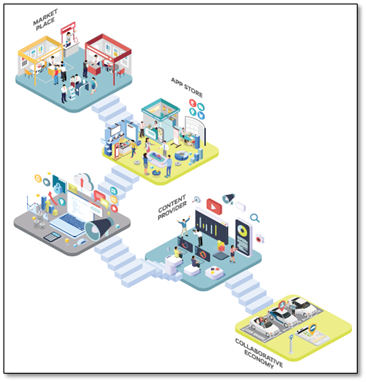
What does Platform Economy mean?
- Platform and Platform Economy: Platforms are algorithm-enabled “cyberplaces” where elements like people or machinery can act or transact. Platform economy is the use of online platforms, which decreases the transaction costs of labour outsourcing and temporary access to goods and services.
- Platform Workers: According to the OECD, “platform workers are individuals who use an app or a website to match themselves with customers, to provide a service in return for money.
- India recently passed landmark legislation, The Code on Social Security, 2020, which recognises this form of work, where “organisations or individuals use online platforms to access other organisations or individuals to solve specific problems or services in exchange for payment”.
- Difference between Gig and Platform workers: While a gig worker is one who works outside the traditional employer-employee relationship, a platform worker is a gig worker who earns an income by associating with a digital platform fulfilling on-demand services for clients.
How is Platform business model different from the traditional business model?
- Flow of Business: In traditional business model the flow of process from production to distribution, marketing and finally reaching to the customer is linear in nature and shows the one-way process. The platform business model is two-way directions from the platform to the whole platform ecosystem. The focus shifts to collaborations with intermediaries and the exchanges of value between producers and consumers on the platform.
- Value Creation: Traditional firms organize their internal resources for value creation by improving an entire chain of product activities. The platforms seek to maximize the overall value of a growing ecosystem by feedback-driven and iterative process.
- Assets: In the traditional model, the resource-based view of competition includes tangible assets like infrastructure, mines and intangible assets like patents, rights etc. However, in the platform business model, the assets are hard to copy as they mostly include the community and the resources which members of platform own and contribute. So, for platform businesses the network of producers and consumers act as a chief asset.
Factors that have led to the rise of Platform Economy
- Emergence of Entrepreneurial Economy: The fourth industrial revolution (4IR) characterised by entrepreneurship, moving further towards a job market of self-starters, has set the stage for a paradigmatic transition in jobs. The expanse of change includes the percolation of cheaper smartphone tech, mobile telephony and accuracy of location services, demand for better urban services, alongside a demand for meaningful jobs.
- Aspirations, Jobs, and India’s Demographic Dividend: The introduction of the platform model to semiskilled jobs such as driving, cleaning, food delivery etc. is bringing visibility to a large mass of people engaged in such urban labour. Changing job roles riding on the back of the platforms also provides for on-demand services, effectively changing the meaning of the job itself. Platform workers tend to be better educated and of a younger age mirroring the larger trends in Indian Economy of 400 million millennials.
- Platform Affords Flexibility: Platform work serves multiple needs - a first-time job, a stopgap job, or even, a longer-term engagement based on skills quickly gained either through training or doing.
The opportunity of transformation that Platform Economy offers
- Radical Reimagination: Platform work allows for a radical reimagination of the workplace, nature of work, type of work and reporting patterns. It allows us to tap into the vast pool of unorganised labour (i.e. independent workers) in India to allocate work based on demand and generate services that are trackable, and importantly, taxable.
- Just Jobs: Platform work assures a steady stream of jobs to the worker, as well as quality of service to the customer. This creates networks of trust within the system which function as stronger accountability measures. Therefore, platform work provides dignified, measurable, meaningful work, which are “just jobs”.
- Social and Digital Financial Inclusion: Inclusivity is designed-in on the platforms to minimise any uneven impact on communities that they operate in. For instance, a Zomato delivery partner in Rajasthan who lives with a locomotor disability has been hailed as a master of hustle. Platform workers also exhibit financial and dgital proficiency through uptake of saving instruments, signalling a huge shift in the way people access work, income and the online world.
- Skilling and Training: Platforms equip workers with transferable skills. This allows a taxi driver to operate as a delivery person, for instance, facilitating horizontal mobility across jobs. Similarly, transferable skills allow for ‘vertical mobility’ of workers thereby expanding their earning opportunities. Platform-led skilling therefore creates a digital footprint of accountability thus far lacking in skilling programmes.
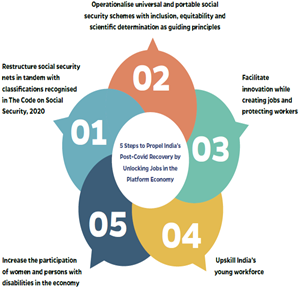
Some Challenges in success of Platform Economy
- Employment Related Benefits: The shift from conventional business model to the platform business model may powerfully modify the dissemination of income and wealth in whole society. The platform business can also generate scattered work schedules as well as increases the levels of part-time work deprived of the employment-related benefits that earlier categorized in full-time work.
- Monopoly Market: The problem of emergence of Monopoly market is quite probable. Many platforms prove to be 'winnertake- all models' where only one or at max two platforms survive.
- Revision of Laws: Due to the change in the working of the current market structure, the policies and rules need to be revised. There is list of policy domains like taxation rules, competition policy, intellectual property rules and service provision requirements which needs to be taken care of in the era of platform economy
Conclusion
After the industrial revolution, one of the major breakthroughs in the global macro-economic environment is platform economy. By recognising platforms, India has begun reconciling two seemingly antagonistic phenomena – the supply of labour and the simultaneous pervasion of technology. The platform economy leverages both demography and technology to promote financial and social inclusion in India’s cities and hinterlands. Platforms, ergo, are here to stay and will play a critical role in defining India’s growth story.
Question
What is Platform Economy? Analyse the potential of Platform economy to transform the current economic structure.
Primary Source: https://olawebcdn.com/ola-institute/OMI_Platform_Economy_Report.pdf
https://www.researchgate.net/publication/332092328_Platform_Economy_Evidence_from_Indian_Market
This Day in History -MiG-21
On June 10 ,1966, the famous MiG-21, were designed for the first time in India at Ozar Airport of Nashik. MiG was a Soviet-era Russian aircraft company that specialised in the production of fighter jets. After the 1965 India-Pakistan war, India decided to scale up the procurement of MiGs, inducting many others like MiG 29, MiG 27, MiG 23 as well as the famous MiG-21s. Marred by a history of engine failures, the MiG-21 was once termed as “Flying Coffin’. Currently, the IAF is operating around 120 MiG-21 Bisons. These aircraft are expected to be phased out completely by the next decade with the introduction of aircrafts like the Light Combat Aircraft (LCA) `Tejas’.

https://www.indiatvnews.com/amp/buzz/who-cares/5-historic-events-of-10th-june-142.html
Image of the Day -Monal
Two species of monal, a colour pheasant have been sighted in Upper Siang district of central Arunachal Pradesh. While Himalayan monal is more widely distributed from Afghanistan to northeast India, the rarer Sclater’s monal is found in southern China and northern Myanmar. Sclater’s monal is listed as vulnerable by the International Union of Conservation of Nature while Himalayan monal is listed as least concern. Both species are protected under schedule-1 of Wildlife Protection Act. Himalayan monal is the state bird of Uttarakhand and the national bird of Nepal.

Supersonic Commercial Plane
- Context: The United Airlines has announced its plan to order 15 supersonic airlines from the USA-based startup Boom.
- Boom’s Overture Supersonic Aircraft would travel at the speed of Mach 1.7 or 1,805 kmphwith a range of 4,250 nautical miles and reach an altitude of 60,000 ft.
- The new supersonic “Overture” aircraft will become the world’s fastest commercial airliner, reducing travel time by about half of today’s planes. The commercial use is expected to be in force by 2029.
- The company has claimed to produce an eco-friendly aircraft with net zero carbon emissions with 100% sustainable aviation fuel (SAF). It aims for zero overland noise.
- The airliner will be equipped with advanced aerodynamics and carbon composite materials through which there will be significant reduction in development and maintenance costs.
Primary source: https://indianexpress.com/article/explained/explained-in-proposed-return-of-supersonic-flying-the-benefits-and-concerns-7348378/
Consumer Confidence Survey (CCS)
- Context: The highlights of the Consumer Confidence Survey (CCS) were recently released by the RBI pointing to some all-time lows.
- The RBI conducts this survey every couple of months by asking households in 13 major cities about their current perceptions and future expectations on general economic situation, employment scenario, price situation, own income and spending levels.
- Based on these specific responses, the RBI constructs two indices: the Current Situation Index (CSI) and the Future Expectations Index (FEI).
- The CSI maps how people view their current situation (on income, employment etc.) vis a vis a year ago. The FEI maps how people expect the situation to be a year from now.
- It indicates how optimistic or pessimistic consumers are regarding the expected financial situation. If the consumers are optimistic, spending will be more, whereas if they are not so confident, their poor consumption pattern may lead to recession.
Primary source: https://indianexpress.com/article/explained/rbi-monetary-policy-review-india-gdp-growth-economy-coronavirus-7348808/
Specialized Supervisory and Regulatory Cadre (SSRC)
- Context: Recruitment for RBI’s specialized supervisory and regulatory cadre (SSRC).
- To reorganize its regulation and supervision departments, the RBI merged the three regulatory departments (department of banking, non-banking and cooperative bank) into one and did likewise for the three supervisory departments.
- It can avoid potential systemic risk related to supervisory arbitrage and information asymmetry.
- The SSRC will comprise officers in Grade B to Executive Director level.
Primary source: https://www.thehindu.com/business/Industry/rbi-eyes-market-for-specialised-supervision-regulation-cadre/article30506427.ece
Raimona
- Context: Raimona reserve forest has been upgraded to a national park in Assam.
- Located in western Assam’s Kokrajhardistrict, Raimona has become Assam’s sixth National Park, the other five being: Kaziranga, Nameri, Orang, Manas and Dibru-Saikhowa.
- The Raimona national park is surrounded by the Phipsoo Wildlife Sanctuary in Bhutan to its north, the Buxa Tiger Reserve in West Bengal to its west and the Manas National Park to its east.
- The Park is within the Bodoland Territorial Region and is an integral part of Manas Biosphere Reserve and the Chirang-Ripu Elephant reserve.
Primary source: https://indianexpress.com/article/north-east-india/assam/two-new-national-parks-dehing-patkai-and-raimona-notified-in-assam-7351595/
Controlling water pollution through technology
Essence: India despite being among the top 10 water rich countries of the world and having major river system, designated as water stressed region and reasons could be growing population pressure, industrialization, urbanization, etc. Though several programs like Ganga Action Plan (GAP I), GAP II and most recently Namami Gange clean-up program was launched with the aim to improve water quality of rivers but according to National Green Tribunal (NGT) not a single drop of river water has been cleaned so far. The main culprit is, one, urban sewerage treatment plants are not capable enough to cope with the increasing sewerage load. Two, nexus between the inspectors and factory owners to look out to look out for other ways in lieu of monthly remuneration. So now this is the high time to get an in-situ sewerage water quality monitoring systems without human interventions to get real time data on water quality’ health which is cheaper and more effective than the present system.
Why you should read this article?
- To get an overview of present status of Water availability in India.
- To know several programs launched by the government and their shortcomings.
- To know those multiple interventions introduced in Namami Gange clean-up program.
- To understand main and major reason behind failing objective of cleaning rivers of India and why automated sensors are need of the hour.
Article Link: https://www.thehindubusinessline.com/opinion/controlling-water-pollution/article34763344.ece
The four dimensions that will shape Quad- HT
Essence: Editorial is looking at Quad grouping from four dimensions which are likely to unfold its impact. First dimension is the recent boost received to India US ties from visit of external affairs minister & attention given to cooperation in the fight against Covid and deepening of bilateral security, defence, and economic relations. Indo Pacific being the pivotal centre of Quad dynamics & European Union (EU) announcing its Indo-Pacific strategy in April, can be regarded as second dimension. Now third dimension represents the Quad’s vulnerability, as ASEAN nations have been largely silent on the Quad’s assertiveness. While China’s continuing aggression is ignored. A major ASEAN grievance is the Biden administration’s delay in connecting with ASEAN capitals at the highest political levels. Another is the Quad’s relative silence and inaction on Myanmar, even as ASEAN’s mediation initiative has received public support from China. And fourth dimension represents Quad’s outreach in the South Pacific Ocean. Additional policy suggestion is given for US administration, that it should initiate a rapprochement with Moscow, to weaken Russia China alliance. And we should remember, Quad’s conflict with China is not only about maritime security and rule of law, but also about economy and new technology.
Why you should read this article ?
- Quad & dynamics in Indo Pacific, should be regarded among the most important topics in I.R.
- This editorial is providing crisp insights on factors which are going to impact its effectiveness as a grouping.
- To gain understanding on major goals of Quad, beyond maritime security & counter to China.
Article Link: https://www.hindustantimes.com/opinion/the-four-dimensions-that-will-shape-quad-101623237190236.html
Why Bezwada Wilson Will Not Rest till the Last Manual Scavenger Quits the Inhuman Profession
About Bezwada Wilson:
- Bezwada Wilson is fighting to eliminate the demeaning profession of Manual Scavenging from its roots.
- As a child, he has witnessed troubles of scavengers. His father was a manual scavenger and his brother worked with Indian Railways for a few years.
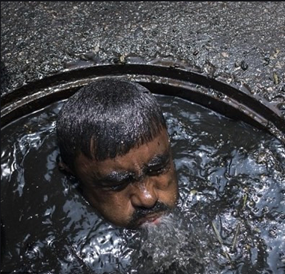
His contribution:
- In 1995, he kick started the Safai Karmchari Andolan (SKA) to liberate people from this degrading occupation and enable them to live with dignity.
- The movement started in Karnataka and is now active in 25 states of India.
- The movement has helped scavengers understand their rights, avail rehabilitation schemes, and avail financial support sources.
Outcome:
- Because of his efforts, the number of people involved in manual scavenging has reduced from 15 lakh in 1996 to 2 lakhs in 2013.
His aims:
- He wants to eliminate scavenging and sanitation work from the Dalit community and abolish the caste system that still prevails in the country.
Values upheld by him:
- Compassion, Human Values of love, care, Social Justice, Fairness
Quote:
- Small aimis a crime; have great aim- A.P.J Abdul Kalam
Share the article
Get Latest Updates on Offers, Event dates, and free Mentorship sessions.

Get in touch with our Expert Academic Counsellors 👋
FAQs
UPSC Daily Current Affairs focuses on learning current events on a daily basis. An aspirant needs to study regular and updated information about current events, news, and relevant topics that are important for UPSC aspirants. It covers national and international affairs, government policies, socio-economic issues, science and technology advancements, and more.
UPSC Daily Current Affairs provides aspirants with a concise and comprehensive overview of the latest happenings and developments across various fields. It helps aspirants stay updated with current affairs and provides them with valuable insights and analysis, which are essential for answering questions in the UPSC examinations. It enhances their knowledge, analytical skills, and ability to connect current affairs with the UPSC syllabus.
UPSC Daily Current Affairs covers a wide range of topics, including politics, economics, science and technology, environment, social issues, governance, international relations, and more. It offers news summaries, in-depth analyses, editorials, opinion pieces, and relevant study materials. It also provides practice questions and quizzes to help aspirants test their understanding of current affairs.
Edukemy's UPSC Daily Current Affairs can be accessed through:
- UPSC Daily Current Affairs can be accessed through Current Affairs tab at the top of the Main Page of Edukemy.
- Edukemy Mobile app: The Daily Current Affairs can also be access through Edukemy Mobile App.
- Social media: Follow Edukemy’s official social media accounts or pages that provide UPSC Daily Current Affairs updates, including Facebook, Twitter, or Telegram channels.

